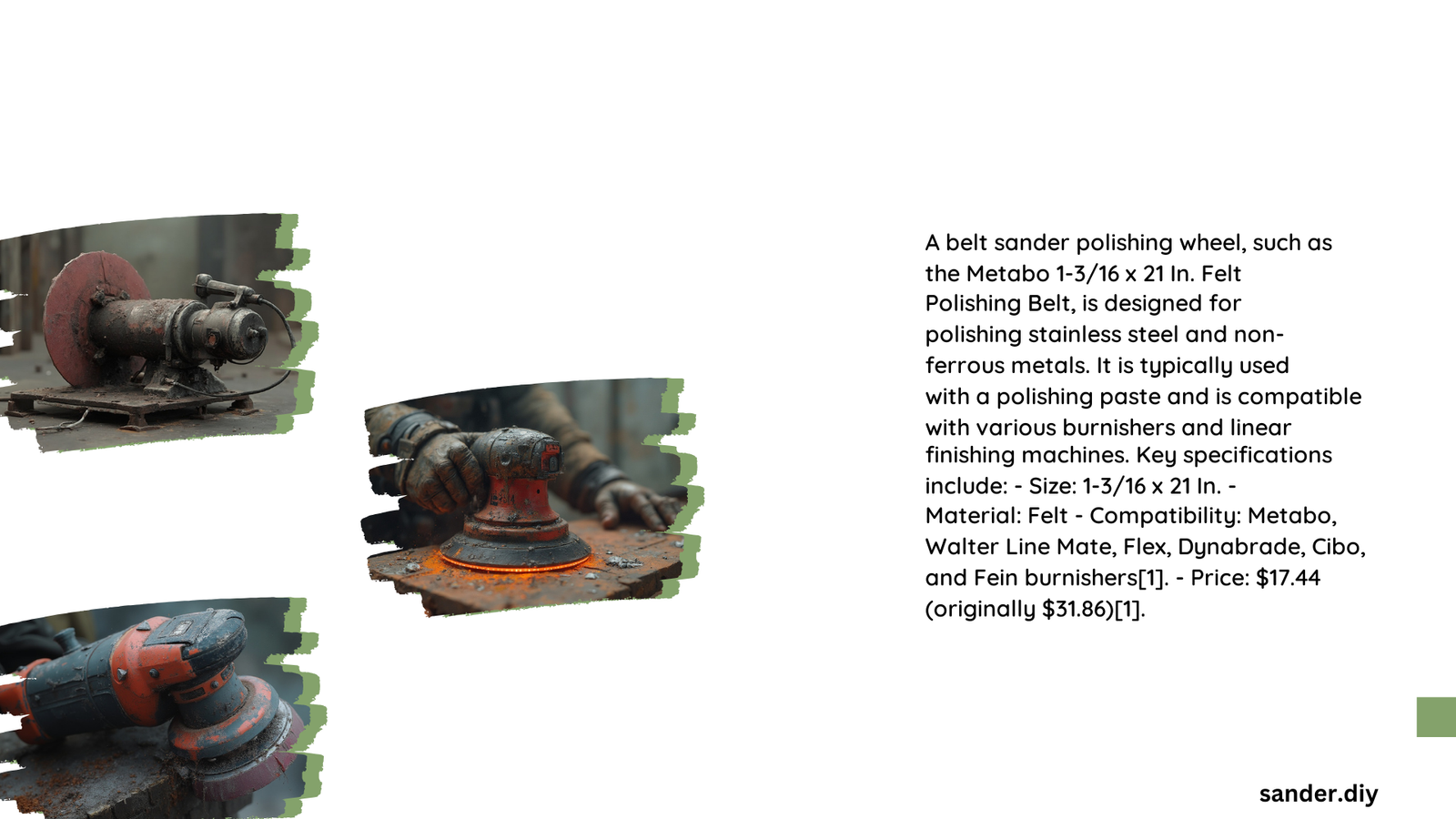Belt sander polishing wheels represent sophisticated abrasive tools designed to transform rough surfaces into smooth, refined finishes. These specialized attachments enable professionals and DIY enthusiasts to achieve precision surface treatments across wood, metal, and composite materials, utilizing advanced fabric, felt, and abrasive technologies for exceptional results.
What Are Belt Sander Polishing Wheels?
Belt sander polishing wheels are specialized rotating attachments that help transform surface textures through systematic abrasion and smoothing processes. These versatile tools come in multiple configurations, each engineered to address specific material finishing requirements.
Types of Polishing Wheel Materials
| Material Type | Characteristics | Best Applications |
|---|---|---|
| Cotton Wheels | Soft, flexible | Final high-gloss polishing |
| Felt Wheels | Dense, compressed | Angle and corner polishing |
| Muslin Buffs | Lightweight, absorbent | Compound application |
| Synthetic Nylon | Durable, consistent | Satin and matte finishes |
How Do Different Wheel Materials Impact Finishing?

Cotton and Muslin Wheel Performance
- Excellent for final polishing stages
- Carry polishing compounds effectively
- Produce high-shine surfaces
- Ideal for delicate material treatments
Felt Wheel Advantages
- Multiple density options
- Versatile compound compatibility
- Superior corner and edge finishing
- Robust material construction
What Grit Levels Determine Polishing Quality?
Grit levels play a crucial role in determining surface finish quality:
- Coarse Grits (36-60)
- Aggressive material removal
- Initial surface preparation
-
Significant texture reduction
-
Medium Grits (80-120)
- Intermediate smoothing
- Preparing surfaces for fine finishing
-
Eliminating major imperfections
-
Fine Grits (220-320)
- Precision surface refinement
- Preparing for final polishing
- Creating smooth base textures
Which Factors Influence Wheel Selection?
Material Compatibility Considerations
- Metal surface requirements
- Wood grain characteristics
- Desired finish smoothness
- Project-specific aesthetic goals
Technical Performance Metrics
- Wheel diameter
- Rotational speed
- Compound absorption
- Flexibility and durability
Professional Recommendations
✅ Best Practices
– Match wheel material to specific project
– Use appropriate polishing compounds
– Maintain consistent pressure
– Clean wheels between applications
– Inspect wheel condition regularly
❌ Common Mistakes to Avoid
– Using incorrect grit levels
– Applying excessive pressure
– Neglecting wheel maintenance
– Mismatching wheel with material type
Advanced Techniques for Superior Finishing
Compound Application Strategies
- Layer thin, even compound coatings
- Use clean, lint-free applicators
- Allow gradual compound absorption
- Rotate wheels systematically
Speed and Pressure Control
- Start with lower rotational speeds
- Increase speed incrementally
- Maintain light, consistent pressure
- Monitor surface temperature
Maintenance and Longevity
Wheel Care Protocol
- Clean after each use
- Store in dust-free environment
- Replace when significant wear appears
- Rotate wheels to ensure even usage
Technical Specifications
- Average Wheel Diameter: 4-8 inches
- Typical RPM Range: 1,500-3,500
- Common Material Compositions: Cotton, Felt, Synthetic Fibers
- Recommended Compounds: Aluminum Oxide, Silicon Carbide
Conclusion
Belt sander polishing wheels represent sophisticated tools enabling precision surface finishing across diverse materials. By understanding wheel characteristics, grit levels, and application techniques, professionals can achieve exceptional results.
